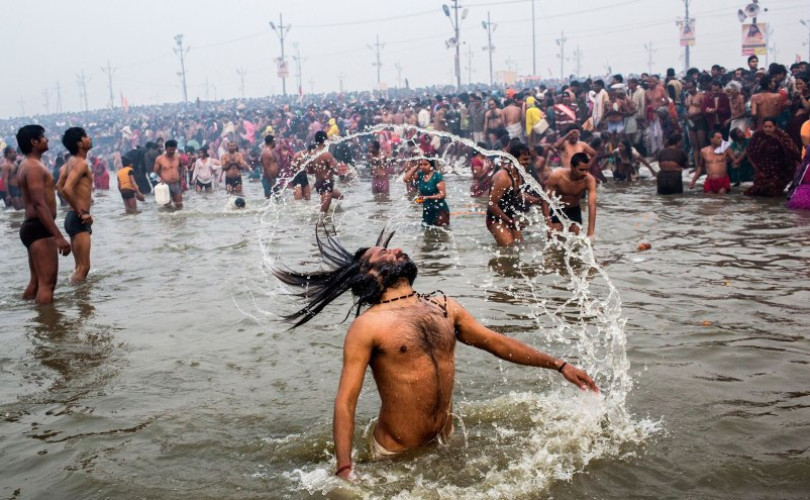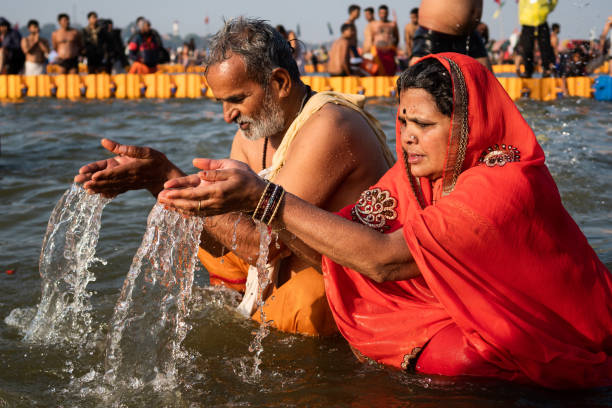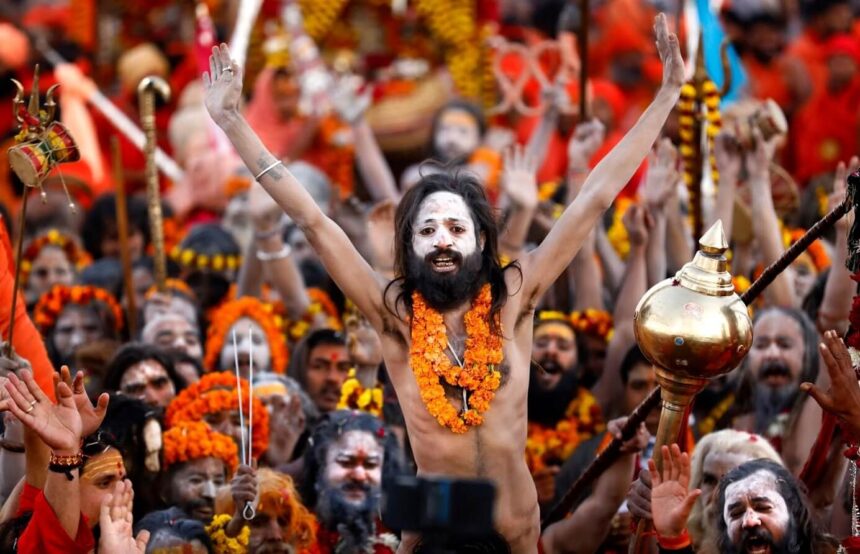India’s 45-day Maha Kumbh Mela 2025, celebrated as the largest gathering on Earth, commenced early Monday in Paush Purnima. About 400 million pilgrims are expected to attend Maha Kumbh.
Strict security measures will be in place as an estimated 1.5 crore (15 million) devotees take a holy dip at the Sangam, the holy confluence of the Ganga, Yamuna, and the legendary Saraswati.
According to the BBC, the ‘Shahi Snan’ on Paush Purnima kicks off the event. This unique celestial alignment occurs only once every 144 years. To participate in this auspicious ritual, devotees have flocked to the Triveni Sangam, where the three rivers converge.
The Maha Kumbh Mela will end on February 26, with important bathing ceremonies (Shahi Snan) scheduled for January 14 (Makar Sankranti), January 29 (Mauni Amavasya), and February 3 (Basant Panchami).
The event, which occurs once every 12 years, begins on Monday. Over the next six weeks, devotees will bathe at Sangam, the confluence of India’s most sacred Ganges river with the Yamuna River and the mythical goddess Saraswati.

Maha Kumbh Bathing Day
On Tuesday’s first major bathing day, ash-smeared naked Hindu holy men with matted dreadlocks, known as Naga sadhus, will take a dawn dip in the northern Indian city.
Ankit Srinivas Drone footage shows a group of Naga sadhus arriving at the Mela grounds in Prayagraj on Saturday, January 11. Ash-smeared holy men, some naked and others dressed in only loincloths or marigold garland draped around their necks, have arrived at the venue.
Hindus believe that taking a dip in the sacred river will cleanse their sins, purify their soul, and free them from the cycle of birth and death, as salvation is the ultimate goal of Hinduism.
Five to eight million worshippers are expected to bathe on Monday, and the number will exceed 20 million the following day. To accommodate the pilgrims and tourists, a vast tent city spanning 4,000 hectares has been built on the riverbanks.
However, on Sunday, just hours before the proceedings began, many parts of Prayagraj’s sprawling grounds still appeared to be under construction. Some camps established by saints and other worshippers had no water or intermittent power supplies.

Cultural Heritage
Hindus believe taking a dip in the sacred river cleanses them of sins. Thousands of toilet cubicles remained uninstalled, and many were unusable due to missing water connections.
The United Nations agency Unesco has designated the festival, which ends on February 26, as an Intangible Cultural Heritage of Humanity.
Its origins can be traced back to a mythological story about gods and demons fighting over a Kumbh (a pitcher) of nectar that appeared during the ocean’s churning.
As the two sides fought over the pot of elixir that promised eternal life, a few drops spilt and fell in four cities: Prayagraj, Haridwar, Ujjain, and Nasik.
The fight lasted 12 celestial years, each equivalent to 12 years on Earth; the Kumbh Mela festival is held every 12 years in the four cities. An arch, half Kumbh, is held halfway between the two festivals.
The mela occurs in all four cities, but the largest festivals, where previous attendance records are broken, are always held in Prayagraj. Sangam in Prayagraj is the confluence of India’s most sacred Ganges river, Yamuna, and the mythical invisible Saraswati.
A major attraction for festival-goers is the presence of naked Naga sadhus, or ascetics, who hurl themselves into the icy waters. However, it holds special significance for the devout, who believe that the waters are imbued with the purity of the saints’ thoughts and actions.
Over the weekend, groups of holy men arrived at the mela grounds in large, noisy processions.
One group of ash-smeared men marched in, some naked and some wearing only loin cloth or marigold garland draped around their necks. They wielded tridents, swords, and small two-headed drums.
Another group’s leaders were led on chariots to their campsite in a large procession, including a music band, dancers, horses, and camels.
Related News:
Body of Indian Freelance Journalist Found in Septic Tank

Geoff Thomas is an award winning journalist known for his sharp insights and no-nonsense reporting style. Over the years he has worked for Reuters and the Canadian Press covering everything from political scandals to human interest stories. He brings a clear and direct approach to his work.














